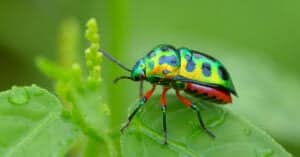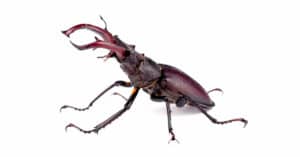Even the word “grub” is gross to think about without imaging their wriggling white bodies. Still, these little bugs are all over the place and almost impossible to totally avoid. There are different types of grubs all over the world, but the ones that most people are familiar with are lawn grubs. Lawn grubs, sometimes known as white grubs, like every other grub species has its unique diet.
Let’s look at these creepy crawlies and learn: What Do Grubs Eat?
What do grubs eat?
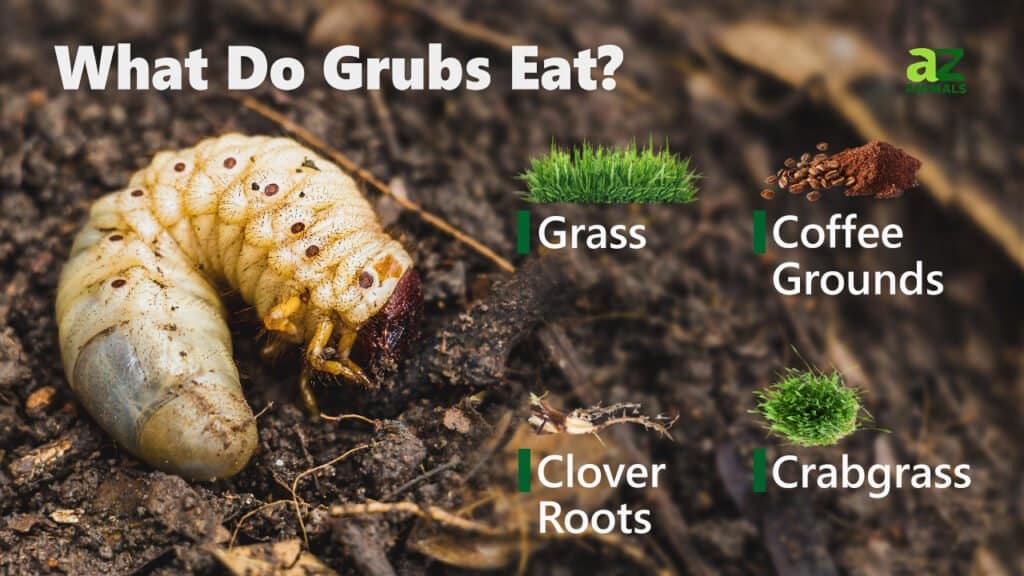
Lawn grubs eat organic matter as they travel through the dirt. Their most common foods are the roots of plants and grasses, often causing damage to them.Lawn grubs live in the soil of almost any grassy backyard. They are white, have a c-shaped body, with black heads with a few legs near their tops. Lawn grass (Bermuda, fescue, bluegrass, and more) provide the perfect environment for these grubs, explaining their prevalence in suburban America.
As these grubs mature, they eventually turn into adult beetles of their species. Once they are adults, these beetles will eat the flowers and leaves of trees, shrubs, and vegetables.
A complete list of the foods grubs eat
Here is a complete list of the foods that white grubs eat:
- grass roots
- shrubs roots
- cereal grain roots
- organic matter in the soil
As these white grubs mature, they turn into beetles. Those beetles are known to eat:
- tree leaves
- tree buds
- shrub leaves
- shrub buds and flowers
- vegetables
- fruits
- saplings
What are grubs?
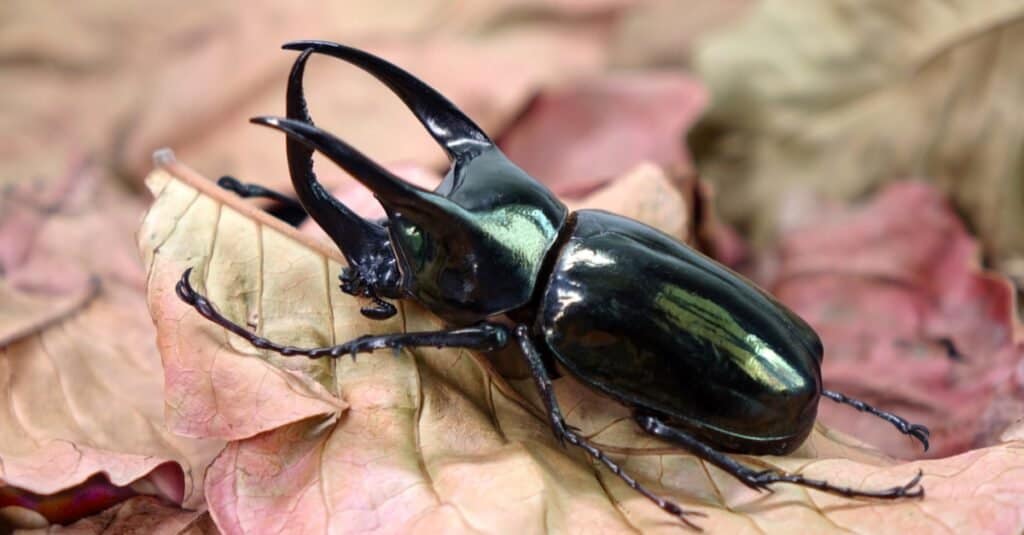
Grubs are the larval form of scarab beetles, of which there are 30,000 species.
©Mark Brandon/Shutterstock.com
A “grub” is an informal term used to describe the larvae of many species of beetle. A beetle will lay eggs in the soil, usually hatching within 2-3 weeks. Once they hatch, the larvae are white-bodied and have black heads, and take on the appearance of grubs. They will live in the soil for nine months before leaving the soil to mate and repeat the process.
In the United States, most people referring to “grubs” are talking about the larval June bugs (June beetles), May beetles, Japanese beetles, and European chafers. All of these beetle species belong to the Scarab beetle family, of which there are over 30,000 species worldwide. They are characterized by their tough bodies, generally bright and metallic coloration, and the common look of their grubs.
Where do grubs live?
Grubs live all over the world in almost every environment. The specific species of grub will determine its exact range and environmental preferences. Most of the beetles found in North America and Europe lay their eggs in the soil, just under the top layer, only a few centimeters down. Most of these species can be found anywhere there are soft roots for them to feed on, namely the roots of grasses and cereal grains. As such, they are incredibly prevalent in backyards, fields, and forest floors. A simple digging stick or shovel is likely to reveal white grubs in almost any suburban setting.
Some of the most famous, although less common, scarab beetles are the dung beetle and the rhinoceros beetle. The dung beetle is known for its transportation of animal dung in balls that it pushes around. Often, these battles prefer large headlands in Africa. Additionally, the rhinoceros beetle is well known and can be found across most of North America.
How do I get rid of grubs?
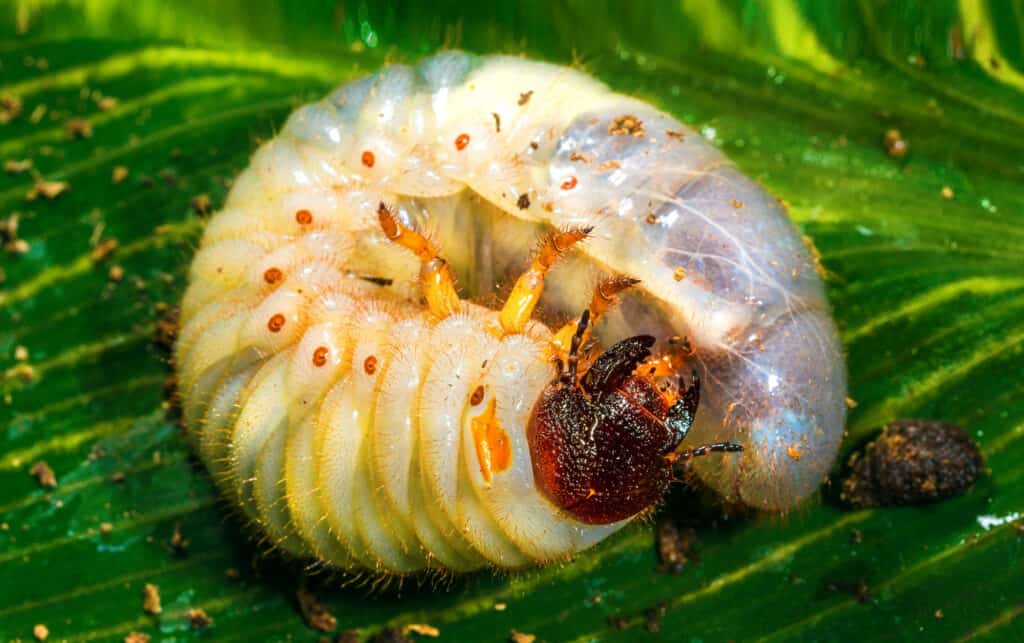
Grubs are usually removed through chemical pesticides.
©GypsyPictureShow/Shutterstock.com
Many avid gardeners and lawn-keepers know all about white grubs as they can become pests. During dryer seasons, small yellow or brown patches throughout a yard are an indicator that there are grubs present beneath the soil, eating the roots of the grass. Unchecked, this process will repeat and can kill a garden, or cause large unsightly blotches in otherwise nice grass. As a result, many people attempt to remove them when noticed.
Outside of simply looking, you can test for grubs by picking up the dead patches. If they roll up and don’t seem to have any roots connected to the soil, you can be fairly certain that grubs are to blame. It is important to note that almost every lawn has some grubs, with a healthy lawn being able to support up to nine per square foot before real damage happens.
The main way people remove grubs is through chemical treatment. There are preventative measures and curative measures, both involving pesticides. You can buy preventative pesticides that will usually contain nitrogen, so it’s important only to use them alongside regular irrigation. Curative pesticides will usually kill them on contact but don’t last for a long time.
Do grubs hurt lawns?

Grubs will kill patches of grass when present in too great of numbers.
©iStock.com/kittikornphongok
There are grubs in almost every lawn out there. The more important problem to address is whether the number of grubs is unsustainable for your lawn. Each square foot of lawn can sustain up to 9 grubs before real damage starts to take place. Any less than that, and it’s unlikely that grubs are the cause of the damage. One important note, however, is that many animals eat the grubs and can damage the grass in search of them. Skunks, robins and ravens, moles, and even armadillos are regular grub-eaters that don’t mind tearing up lawns.
If there are over nine grubs per square foot, they will begin to cause damage to the grass. The first thing to happen will be sponginess across the lawn. If left untreated, the sponginess will eventually result in the patch of grass dying as the roots are eaten away, and the grass loses the ability to get nutrients and water from the soil.
The photo featured at the top of this post is © GypsyPictureShow/Shutterstock.com
Thank you for reading! Have some feedback for us? Contact the AZ Animals editorial team.



